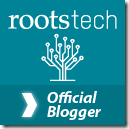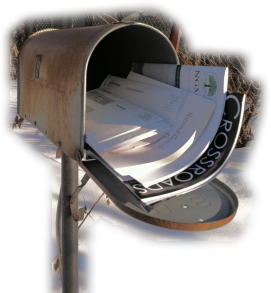In response to my article, “FamilySearch Values Sources,” I received this comment.
Dear Ancestry Insider,
I Googled “world population vital records” and came across an interesting chart on page 3 of: http://www.who.int/healthinfo/statistics/WhoCounts2.pdf (inadequate source - - right?) The chart indicates that 70 (100-30) percent of the countries in the world have inadequate or no birth records. Americas 47 percent, Africa 95 percent, and in South-East Asia 99 percent of the countries have inadequate or no birth records.
Should we stop attempting to build a one-world tree where so many of the branches will, by some, be considered “Mythology”? Obviously the answer is a resounding “No”. Will accredited genealogists need to get used to seeing a high percentage of the branches in the tree unsourced? They will have to answer that for themselves.
Perhaps we need to consider replacing the statement, “Genealogy without sources is Mythology” with a statement such as “Genealogy without sources is 100 percent better than No Genealogy”. At least there will be a tree where the tree decorators can come along and hang on a source ornament (if one exists).
Signed,
Demer *
Logan FamilySearch Library
Dear Demer,
I’m sure I must be misunderstanding your comments in some regard. Let me address each point in turn and you can leave a comment explaining where I’ve misunderstood.
I Googled “world population vital records” and came across an interesting chart on page 3 of: http://www.who.int/healthinfo/statistics/WhoCounts2.pdf (inadequate source - - right?) The chart indicates that 70 (100-30) percent of the countries in the world have inadequate or no birth records. Americas 47 percent, Africa 95 percent, and in South-East Asia 99 percent of the countries have inadequate or no birth records.
I assume you are aware that other sources exist besides vital records. You probably know how recently vital record laws were enacted in this country and have research strategies you teach patrons of the Logan FamilySearch Library for ancestors born before then.
I concede your point that some people lived but were never recorded in any source. I trust you are not suggesting that we try to account for them. That is exactly what Abigail did. (I’ll leave off her last name, even though you can look it up in New FamilySearch.) Her submission, father to son, is given below. Birth and death years are in parentheses.
One can argue that each of the people in this tree really did exist because every son had to have a father. However, notice that each generation is separated by 25 years and some names are inexplicably from the Book of Mormon. It is not surprising that no sources are provided, as no records exist for some of these time periods. One must assume that this information is fraudulent.
Should we stop attempting to build a one-world tree where so many of the branches will, by some, be considered “Mythology”? Obviously the answer is a resounding “No”.
You are certainly right that some will consider Abigail’s branch to be mythology. I hope you are part of that group. Let’s attempt to build a one-world tree, but let’s do it with sources, not mythology.
Will accredited genealogists need to get used to seeing a high percentage of the branches in the tree unsourced? They will have to answer that for themselves.
Slamming accredited genealogists does nothing to advance your argument.
Perhaps we need to consider replacing the statement, “Genealogy without sources is Mythology” with a statement such as “Genealogy without sources is 100 percent better than No Genealogy”.
I respectfully disagree. Abigail’s genealogy is not 100 percent better. It is 100 percent worse.
At least there will be a tree where the tree decorators can come along and hang on a source ornament (if one exists).
You’ve missed one of the most important, driving factors for the creation of the tree: eliminating the duplication of research. Why make someone else duplicate your research to find the source you used? If you didn’t make up your information, why wouldn’t you specify your sources?
Some people will argue that Abigail’s submission is an aberration, that most people aren’t fabricating genealogies. More pernicious than Abigail’s submission is the wrong information that isn’t obviously wrong. Most are innocent mistakes, but the intent of the submitter doesn’t change the effort necessary to detect and correct the errors.
Help me out here Demer. I know you don’t want a tree with fabricated information. I know you don’t want people to withhold the sources of their information. I hope you know that vital records are not the only sources that can be specified. I know you don’t want to force others to duplicate research just to specify the sources that the submitter could have specified themselves. What am I missing?
Signed,
--The Insider

















 I mentioned Monday that
I mentioned Monday that